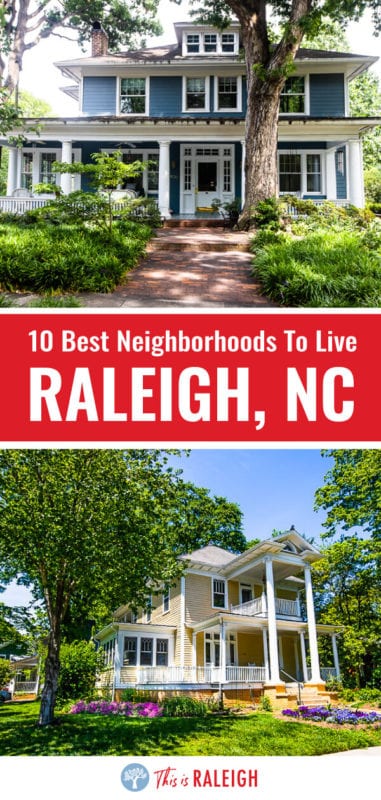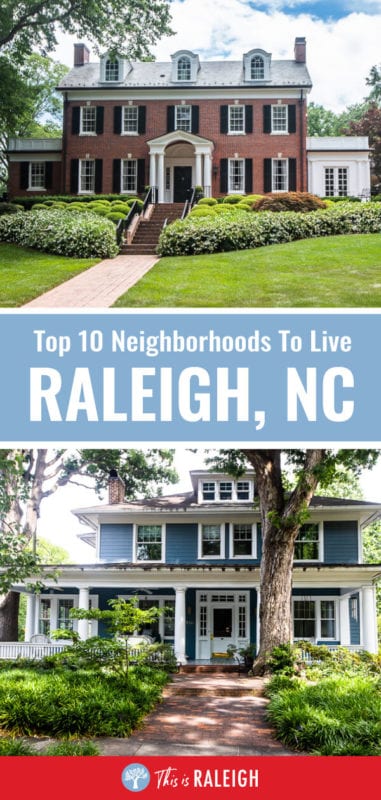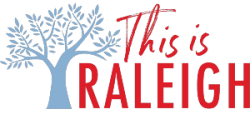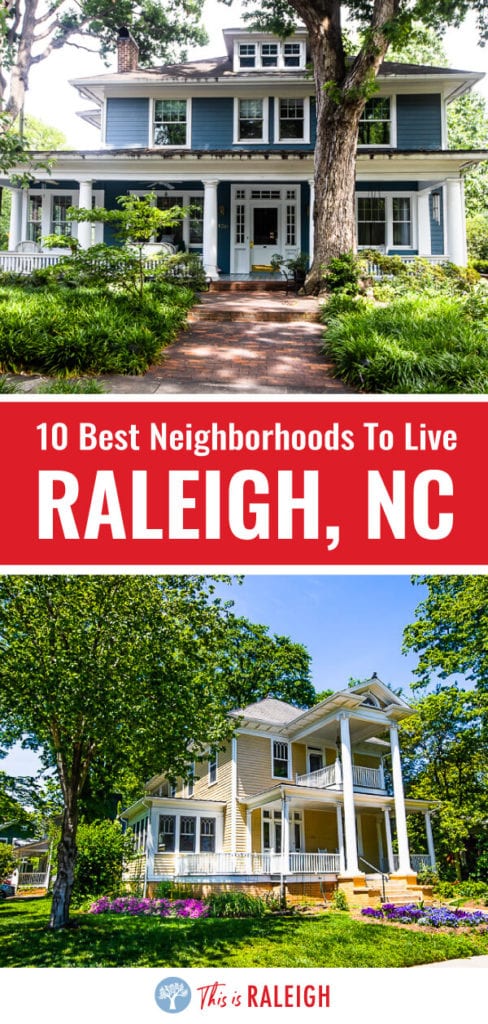Thinking of moving to Raleigh? You’re not alone! The Capital of North Carolina is one of the fastest growing cities in the USA, partly due to the expansion of the technology industry, and partly because the City of Oaks is just a nice place to live – period.
We should know, we moved to Raleigh back in 2004 and decided to raise our kids here, so we think you’re making an excellent choice!
The biggest question people ask about moving to Raleigh is; which is the best neighborhood in Raleigh to call home?
There are 40 neighborhoods in Raleigh inside the beltline (that means within Interstate 440 that encircles downtown Raleigh with numerous exits to all parts of the city) and a further 70 outside the beltline, so you really have a lot of options to choose from.
We know it’s overwhelming deciding on which area to stay in – we ourselves were in the same position when we relocated to Raleigh – so we’ve prepared this guide to the best neighborhoods in Raleigh to help you narrow down your search.
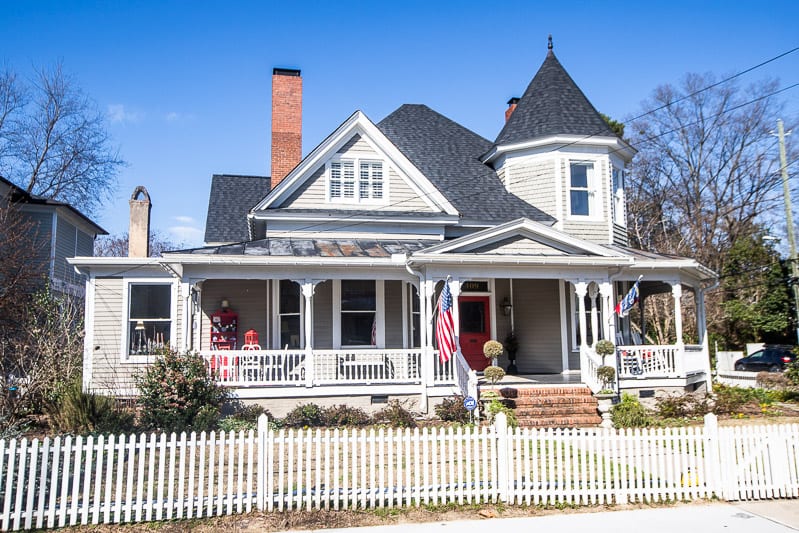
We have featured neighborhoods inside the beltline, as for first timers to Raleigh, this is the place to be. It’s where you’ll find the lively downtown Raleigh district, and the most historic Raleigh neighborhoods with beautifully restored homes that date back centuries mixed with modern construction.
Are you looking to buy or sell a home and are in needed of a real estate agent in the Raleigh area? As a Licensed Realtor and referral agent, I can save you the time and stress searching and vetting, and connect you to my team of trusted Realtor partners. Read more here, or click the link below
Click here to get startedThe Best Neighborhoods in Raleigh
To help you paint a picture of our top neighborhoods, here is a map which details each district and their location.
1. Boylan Heights
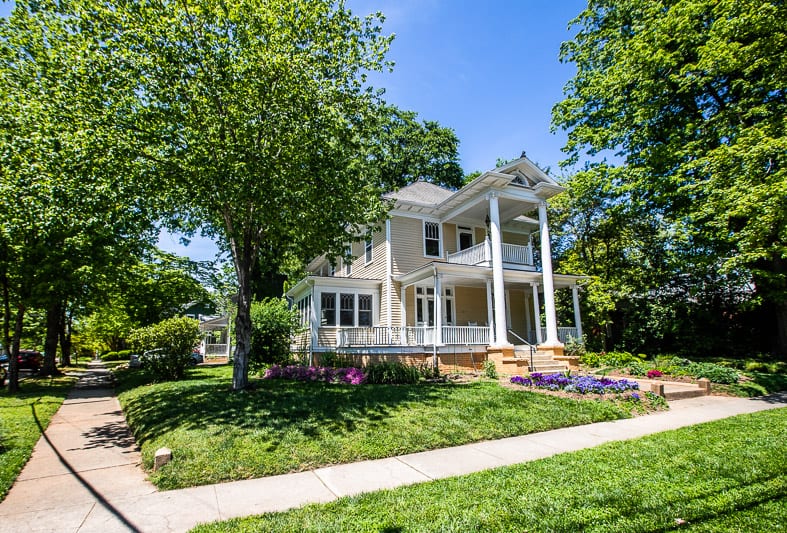
- Good for: wealthy professionals, retirees, families
- Average house cost: Median listing price: $1.4 million (Price per Sq/Ft: $318.2K)
- Average rent cost: around $1,925 per month for a 2-bedroom home
- Nearby Schools: Wiley Elementary, Daniels Middle, Needham Broughton High. See all schools here.
- Map of neighborhood
Boylan Heights is one of the Raleigh neighborhoods we could see ourselves living in, if only we could afford it! It’s the most expensive neighborhood in the city.
We walk and drive through this area a lot dreaming of owning one of the historic cottages that occupy this area, and it’s also within walking distance of downtown and the Capital District!
Historic Boylan Heights was one of Raleigh’s first planned suburbs with development beginning in 1907, and it was added to the National Register of Historic Places as a historic district in 1985.
Here craftsman bungalows sit along with transitional Queen Anne/Colonial Revivals and Dutch Colonials, while mature trees dominate the streetscapes.
On the immediate southwest edge of the city center, the streets extend from the downtown grid but curve aesthetically to match the contours of the hilltop setting.
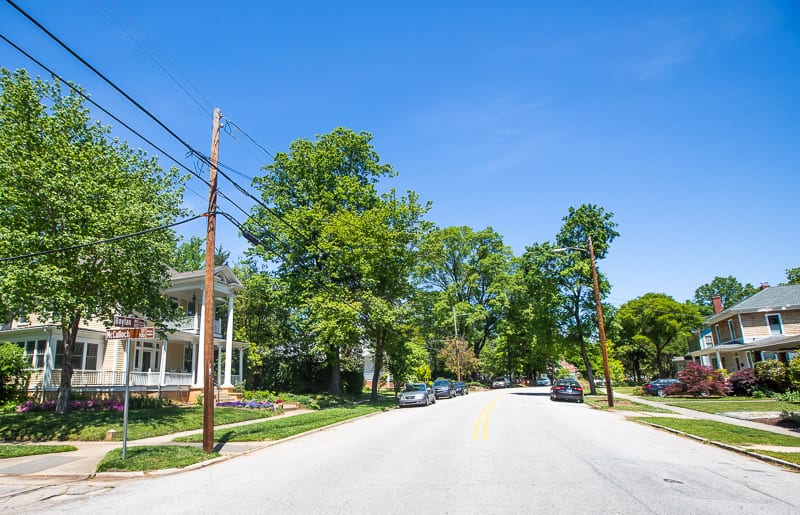
You’re just a 15-minute walk from South Boyland Ave to Fayetteville Street, and a 10-minute walk to the popular Warehouse District.
This is a great neighborhood near the city center as you’re just moments away from Raleigh’s best downtown restaurants, bars, and entertaining venues like Red Hat Amphitheater.
The hilly terrain lends itself to a picturesque and truly residential neighborhood overlooking downtown.
Whilst the neighborhood itself doesn’t have any restaurants or shops, that helps to create a peaceful atmosphere. There are a few entrepreneurial firms and artists based here though.
The most expensive houses in Queen Anne or Colonial Revival styles were built near Montfort Hall, the antebellum Boylan mansion at the top of the hill. More modest homes, chiefly in the bungalow style, were constructed further below.
The spacious lots on S. Boylan Avenue feature deep setbacks and inviting front porches, whilst the rest of the development is made up of modest bungalows on smaller lots and shallower setbacks.
This close-knit community is highly sought after by creatives as well as families.
Things to do, eat, drink:
- The popular and annual Art Walk.
- Enjoy fantastic city views, beer and food at Wye Hill Kitchen & Brewing. (read our review of Wye Hill)
- Fantastic craft bread and pastries at Boulted Bread.
- Go for a jog around Pullen Park
Historic Oakwood
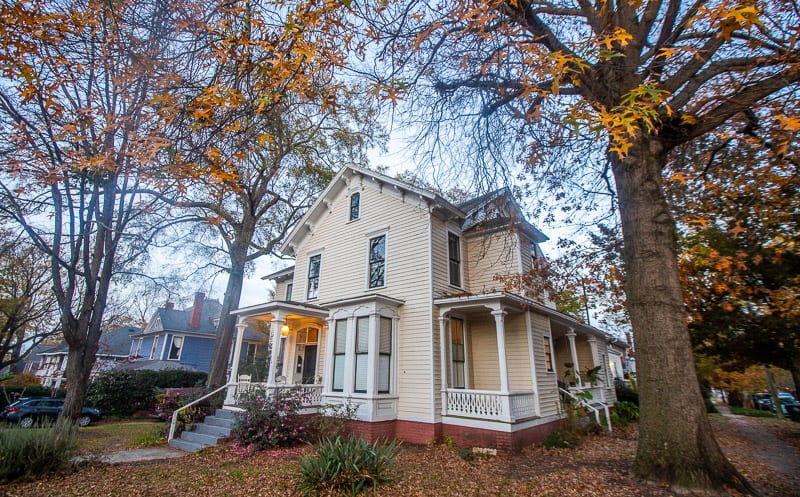
- Good for: young professionals, families
- Average house cost: Median listing price: $747.5K (Price per Sq/Ft: $431)
- Average rent cost: around $2000 per month for a 2-bedroom home
- Nearby schools: Conn Elementary, Daniels Middle, Needham Broughton High.
- Map of neighborhood
Oakwood is a historic district that dates all the way back to the 1800’s that rose after the Civil War.
It’s home to magnificent oak trees and a combination of restored Grand Victorians built in the 1800s, to modest bungalows of the 1920s, and newly constructed homes giving you a neighborhood feel whilst being only 1 mile north east of downtown Raleigh.
In addition to their passion for preserving their historic homes, many residents are avid gardeners and their backyards are often hidden gems where homeowners have created beautiful gardens.
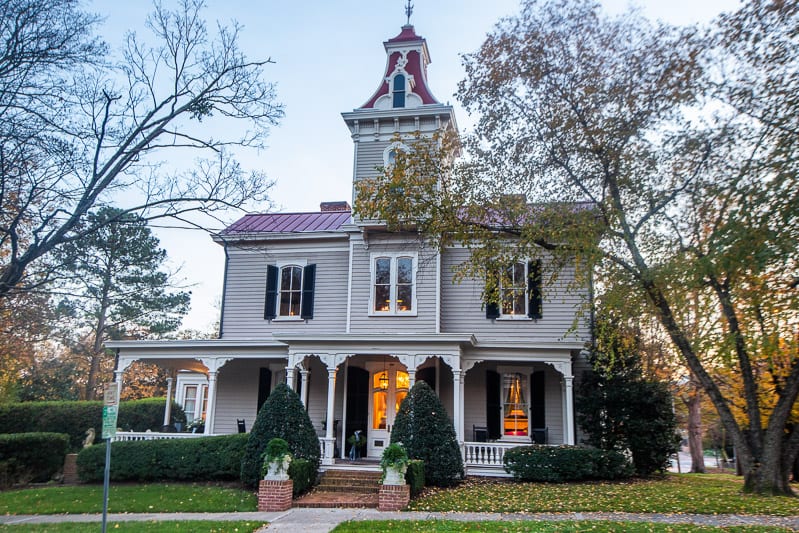
This is a popular area to live for professionals working in downtown Raleigh, and for families seeking community.
It’s one of the more expensive neighborhoods to live in because of its close proximity to the city center, and it’s one of the best neighborhoods in Raleigh for its historical value and community feel.
And one of the fun Christmas events in Raleigh each year is the Oakwood candlelight walking tour!
Things to do, eat, drink:
- Grab some bread, a pastry, or coffee from nearby Yellow Dog Bread Co
- Check out Historic Oakwood Cemetery which has served as a noble resting place for Raleigh residents for more than a century.
- Enjoy handcrafted ice cream at Two Roosters.
- Standard Beer + Food for great beers, a beer garden and kitchen.
- The Station – stylish hangout in an old gas station.
- The Historic Oakwood preservation society offers candlelight home and haunted, twisted history tours
Cameron Park
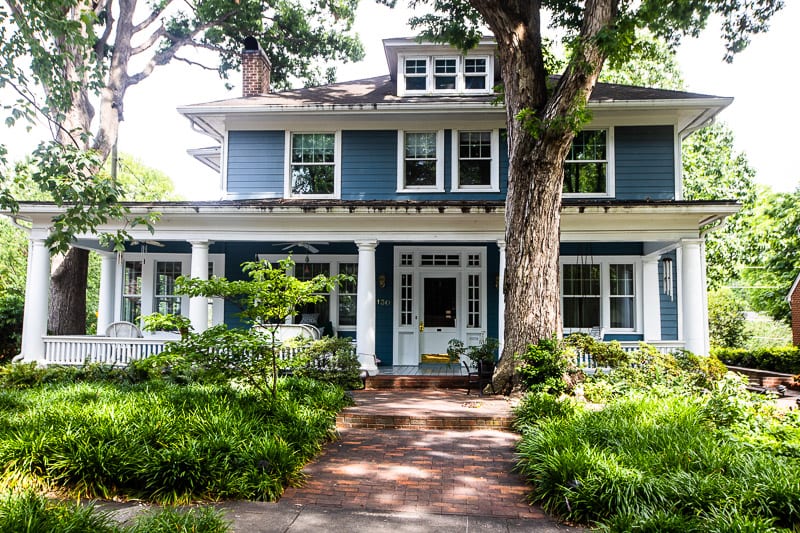
- Good for: families
- Average house cost: Median listing price: $948 (Price per Sq/Ft: $301)
- Average rent cost: around $1775 per month for a 2-bedroom home
- Nearby schools: Wiley Elementary, Daniels Middle, Needham Broughton High. See all schools here.
- Map of neighborhood
Bordered by Hillsborough Street and the Village District Shopping Center is the historic neighborhood of Cameron Park, also known as Forest Park.
This neighborhood occupies a key location near North Carolina State University (north campus) and St Mary’s School.
Developed between 1910 and 1935, Cameron Park was one of three suburbs subdivided into lots as development began along Hillsborough Street with a streetcar line making the location appealing and convenient.
Cameron Park started life as Raleigh’s most expensive suburb but slid into decline by the 60s due to the departure of many of the original home inhabitants.
It has since regained its status as one of Raleigh’s most attractive family neighborhoods as it pushed back on encroaching fraternity houses and apartment conversions, and was listed on the National Register of Historic Places in 1985 as a national historic district.
This neighborhood has a variety of architectural types from Queen Anne and Colonial Revivals, to large bungalows and eclectic styles like Georgian Revival, Tudor Revival, and Mission Revival.
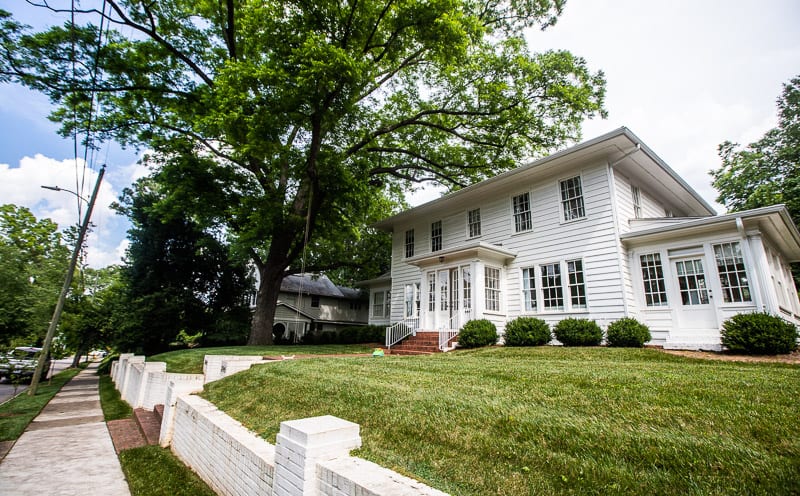
Despite the variety of styles, the houses were uniformly large and upscale for the era.
Three ravines cut through Cameron Park creating parkland interspersed with the residential blocks, and Edna Metz Wells Park draws families to the area.
The mature trees, nearby schools and parks, and convenient location to downtown Raleigh make this one of the most desirable neighborhoods in Raleigh!
You’re only a 5 minute drive or 25 minute walk to the State Capitol Building along Hillsborough Street and all the best restaurants, bars, and cafes in downtown.
Plus, you’re walking distance from all the shops, cafes, and bars along Hillsborough St across from NC State, and moments away from Glenwood South and the Warehouse District.
Things to do, eat, drink:
- Shop, eat, drink at Village District Shopping Center
- Farm-to-Table meals at Irregardless Cafe
- Jubala Coffee
- Trophy Brewing & Pizza
The Village District
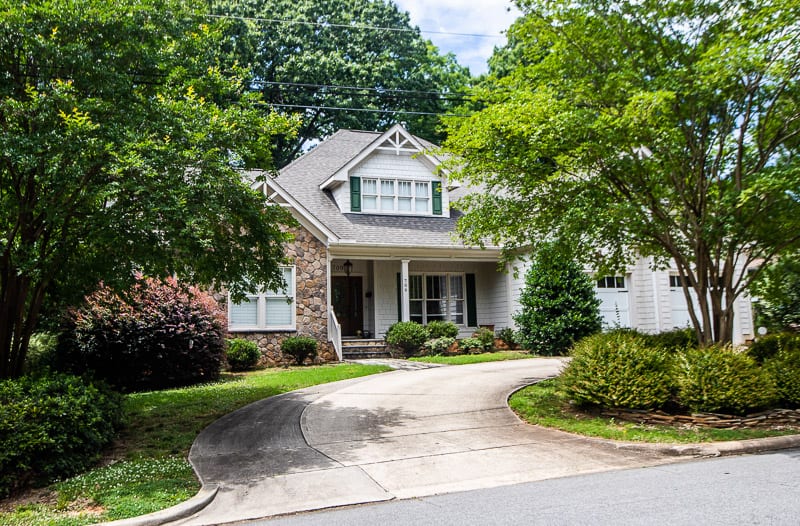
- Good for: young professionals, families
- Average house cost: Median listing price: $749.5K (Price per Sq/Ft: $506)
- Average rent cost: around $1600 per month for a 2-bedroom home
- Nearby schools: Wiley Elementary, Daniels Middle, Needham Broughton High.
- Map of neighborhood
The Village District, formerly known as Cameron Village, is a little less historic than Cameron Park, but a little more affordable. In fact, The Village District could be considered the best bargain in downtown Raleigh.
Located north of the shopping center of the same name, Cameron Village has ranch-style homes, apartments, condos, single family homes and student rentals – but student housing prices have risen beyond what most students can now afford.
But considering all those housing options, the Village District is dominated by condos, many of which were built in 1949 but many are very recent.
This neighborhood is very walk-able and the Village District Shopping Center has over 100 unique and distinctive shops, cafés, restaurants and services.
Opened in 1949, the outdoor shopping center quickly became the premier shopping area in Raleigh and is considered the first shopping center to be built between Washington, D.C. and Atlanta.
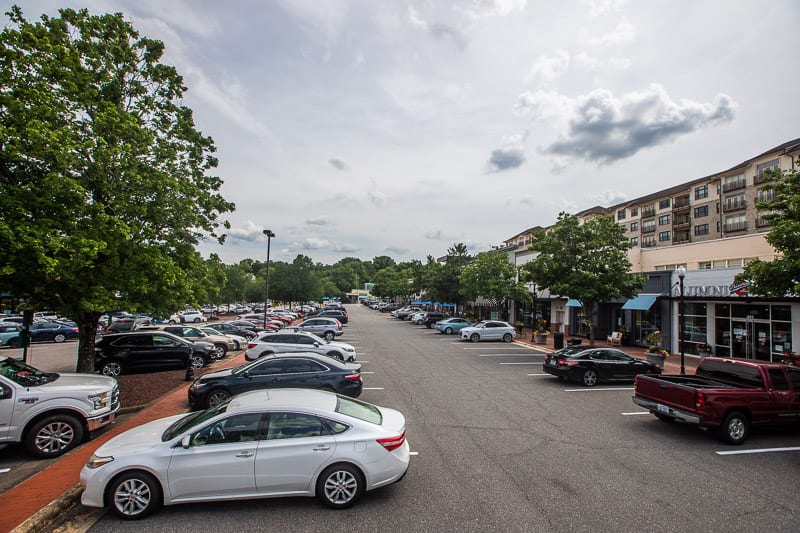
It has been a favorite neighborhood destination for shoppers and diners and provides a comfortable gathering space and retreat from the chaos of urban life.
If you choose to live around the Village District, you’re convenient to downtown (6-minute drive) to Research Triangle Park (20-minute drive) and to Raleigh-Durham International Airport (18-minutes).
This Raleigh neighborhood has nice starter homes on large lots giving the neighborhood a more suburban vibe, and is sought after by young professionals and families.
Things to do, eat, drink:
- Benelux Coffee – Belgian waffles, coffee, tea
- So – Ca – cuisine from the Caribbean, Central & South America
- Tupelo Honey – Southern comfort food
- Village Draft House – pub food + 100 beers
- Flying Biscuit – all day breakfast selection
Mordecai
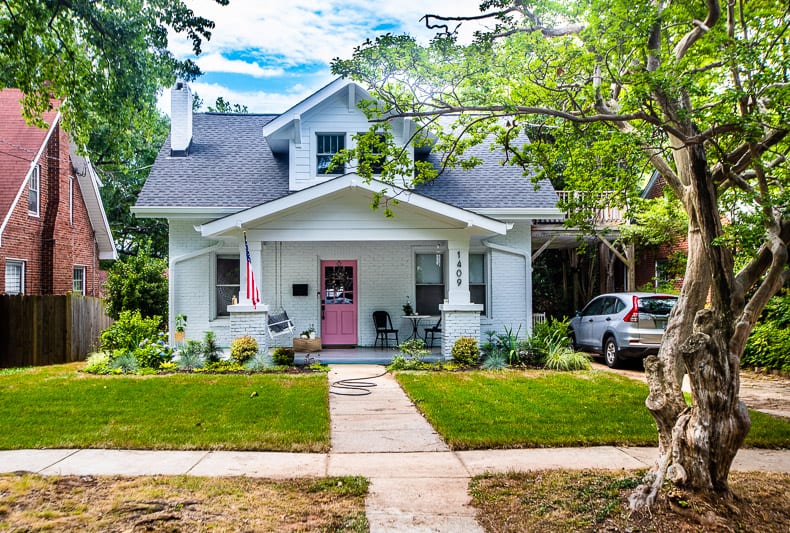
- Good for: families, students, young professionals
- Average house cost: Median listing price: $849K (Price per Sq/Ft: $403)
- Average rent cost: around $1650 per month for a 2-bedroom home
- Nearby schools: Conn Elementary, Daniels Middle, Needham Broughton High.
- Map of neighborhood
Located northeast of downtown (a bit north of Oakwood) Mordecai is just a 5-minute drive or 25-minute walk to the State Capitol Building and is Raleigh’s oldest neighborhood dating back to the late 18th century.
The Mordecai House, which dates from 1785 is the oldest house in Raleigh still at its original location, giving this neighborhood its name. And Andrew Johnson, the 17th President of the United States, was born here.
Mordecai is a relatively small neighborhood offering quaint and charming homes (many of which have been updated on the inside with modern features and amenities), tree-lined streets, quiet roads, and a rich history.
There’s also a few newly constructed homes and condos available in the area.
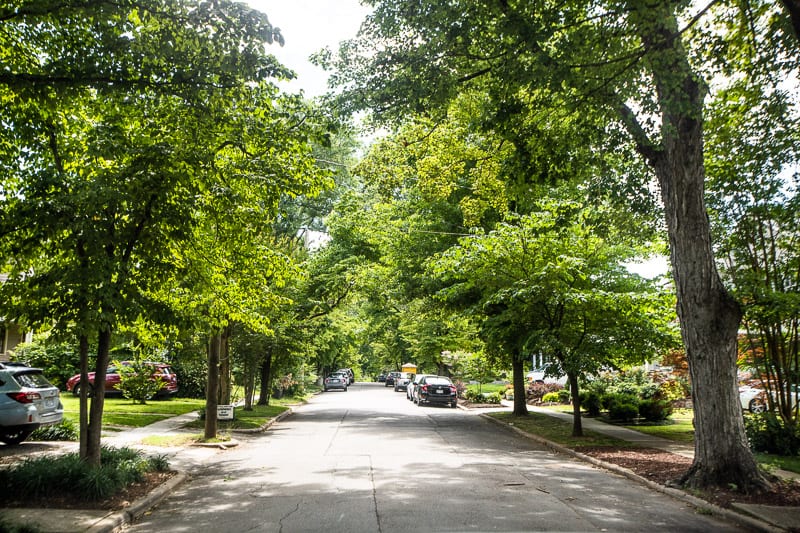
Mordecai’s popularity has grown substantially in recent years as one of the best places to live in Raleigh due to its close proximity to the heart of Raleigh, peace and quiet, charm, and is popular with families and young professionals.
Close by is William Peace University, a highly rated elementary charter school, and the ever evolving Peace Street that offers local bakery-cafes, bars, and boutique stores.
It’s also a relatively easy commute to Raleigh-Durham Airport and Research Triangle Park allowing residents the convenience and tranquility aspects of life.
If you’re looking for a great historic neighborhood close to downtown Raleigh, consider Mordecai.
Things to do, eat, drink:
- Mordecai Historic Park
- Handmade artisan breads, pastries, and coffee from Yellow Dog Bread Company
- Handcrafted ice cream at Two Roosters
- Dine at Crawford & Son (Here is our restaurant review for Crawford & Son)
- Eat and drink at The Station
- Craft retail beer store Pelagic Beer & Wine
- Sip cocktails and craft beers at Person Street Bar
Read more: A complete guide to North Person St
Five Points
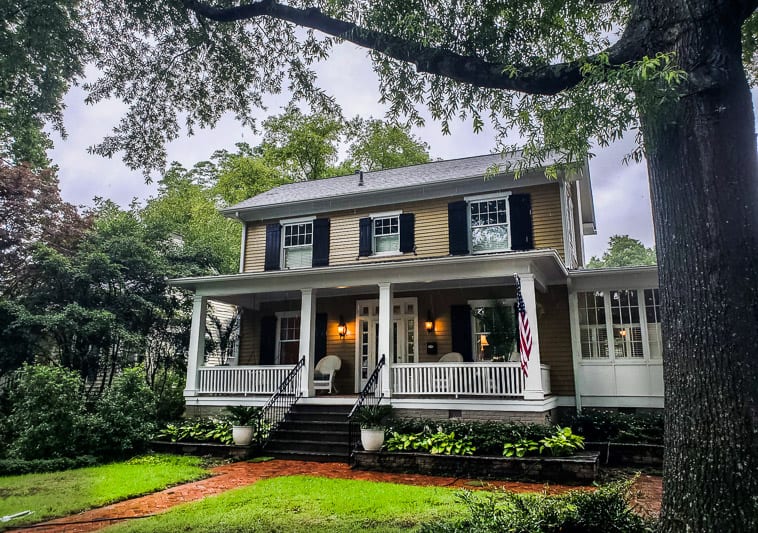
- Good for: wealthy families, professionals
- Average house cost: Median listing price: $1.1 million (Price per Sq/Ft: $445)
- Average rent cost: around $2100 per month for a 2-bedroom home
- Nearby schools: Underwood Elementary, Daniels Middle, Needham Broughton High.
- Map of neighborhood
Located just 2 miles north of downtown, the quirky and exuberant Five Points area is so named because it’s where five historic neighborhoods converge at the five-point street intersection of Glenwood Avenue, Whitaker Mill Road, and Fairview Road.
The neighborhoods are: Hayes Barton, Bloomsbury, Georgetown, Vanguard Park, and Roanoke Park. All of the neighborhoods were platted in the 1910s through the early 1920s and each neighborhood has a distinct character.
The area is characterized by tree lined streets, bungalows, Colonial Revival style homes, one to two story single family homes, estate homes, patio homes and townhomes.
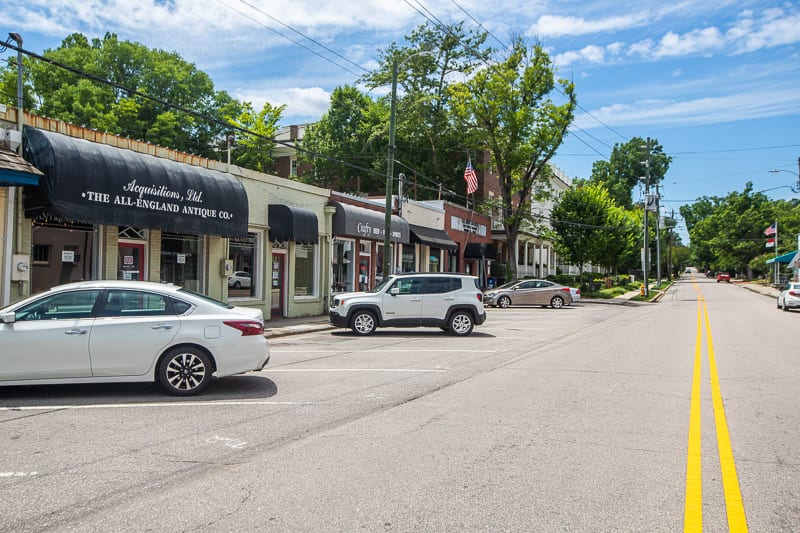
Rich in diversity, locals are drawn to the area because of the convenient and easy access to downtown, pedestrian-friendly side-walked streets, pleasant ambiance, parks, and its combination of old and new.
There’s also the small town feel with the epicenter of shops, restaurants, cafes, bars, pharmacies, convenience stores and the Rialto Theater at the main intersection along Glenwood Avenue and Fairview Road.
It’s also one of the more expensive neighborhoods to buy and rent property, but we’ve only seen homes here increase in value since they keep their historic roots.
Things to do, eat, drink:
- Rialto Theatre – one of the area’s few remaining independent movie theaters.
- The Point at Glenwood Restaurant & Bar
- Lola’s Beach Bar
- Third Place coffee shop – eclectic coffee house
- Hayes Barton Cafe & Dessertery
- Lilly’s Pizza
- Big Boss Brewing Company
- Neuse River Brewing & Brasserie
- Nickelpoint Brewing Co.
Hayes Barton
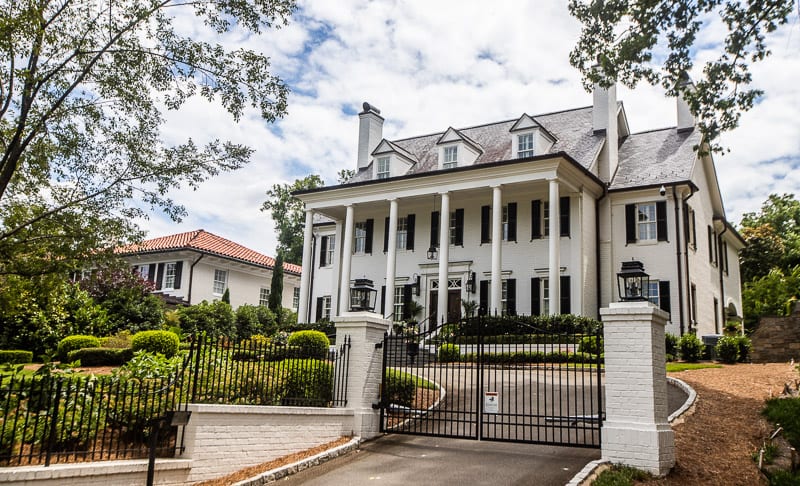
- Good for: families
- Average house cost: Median listing price: $1.2 million (Price per Sq/Ft: $488)
- Average rent cost: around $1700 per month for a 2-bedroom home
- Nearby schools: Lacy Elementary, Daniels Middle, Needham Broughton High.
- Map of neighborhood
Considered one of the Five Points neighborhoods, Hayes Barton is one of the premier Raleigh neighborhoods and one of the most popular places to live in Raleigh inside the beltline. And with that comes a higher price point.
Built in the 1920’s in the post World War I wave of suburban development, Hayes Barton was the grandest of these new suburbs and the layout included some of the first greenways and open park areas in suburban neighborhoods.
Homes in Hayes Barton are a collection of eclectic styles and sizes including Georgian, Colonial, Tudor, Craftsman, Bungalow and contemporary designs with prices ranging from $300,000 to $5 million.
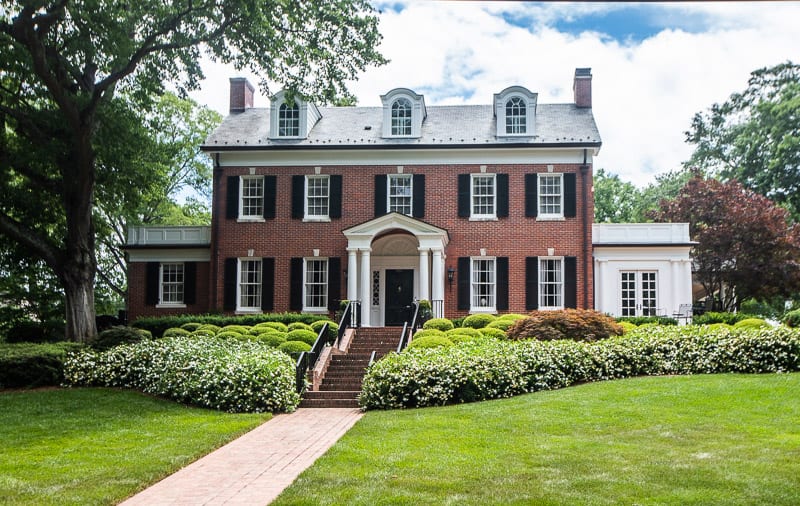
Affluent Hayes Barton has a lot to offer: great location close to downtown Raleigh, the history of the neighborhood, various architectural styles, homes with mature trees and larger lots, and walking distance to the shops and restaurants at the hub of Five Points.
If you’re looking for a great place to live in downtown Raleigh where you can still have land and some peace and quiet, check out Hayes Barton!
Warehouse District
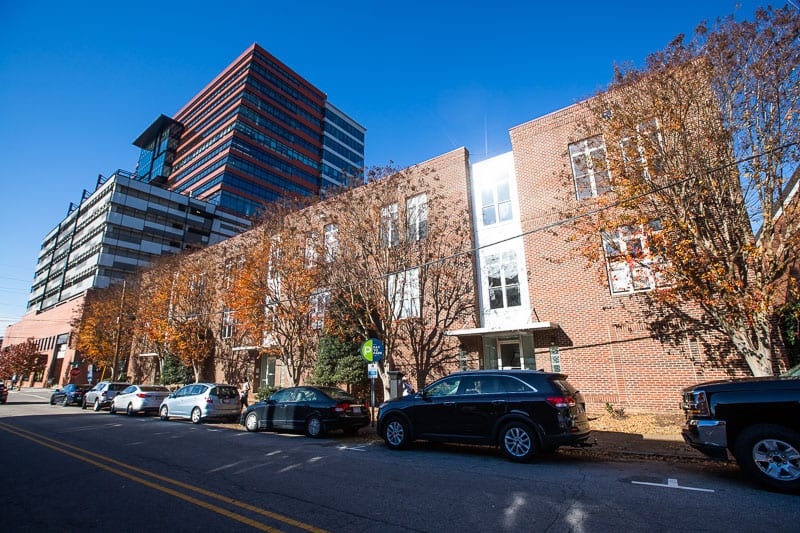
- Good for: young professionals, singles, artists
- Average house cost: Median listing price: $795K (Price per Sq/Ft: $521)
- Average rent cost: around $1500 per month for a 2-bedroom home
- Nearby schools: Wiley Elementary, Daniels Middle, Needham Broughton High.
- Map of neighborhood
The six-block Warehouse District has transformed over recent years from its former red-brick industrial buildings into a vibrant mix of restaurants, cafes, bars, boutique shopping, technology firms, and apartment buildings.
Located just 0.4 miles west of Fayetteville Street in downtown, this part of the city previously served as Raleigh’s railroad and warehouse distribution hub.
Today it’s home to Citrix, Raleigh Union Station, Morgan Street Food Hall, the Contemporary Art Museum, Weaver Street Market, lofty condominiums, and The Dillon – an 18 story office tower with retail space and two six-story apartment buildings.
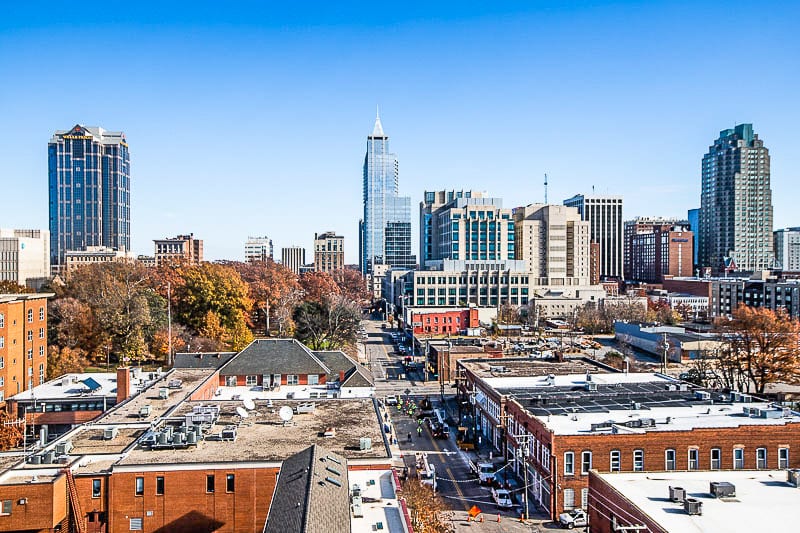
In the hip Warehouse District, the historic character has been revitalized with a modern twist bringing people back to live, work and play in an urban environment.
This easy-to-walk district is one of the best neighborhoods in Raleigh for young professionals and a hot spot for singles and artists.
Things to do, eat, drink:
- Heirloom Brewshop – coffee, tea, sake bar
- Contemporary Art Museum (CAM)
- Morgan Street Food Hall
- Amazing vegan & vegetarian food at Fiction Kitchen
- The Flourish Market – unique women’s + gift boutique store
- The Pit – authentic Carolina BBQ (Q&A with owner, Greg Hatem)
- Whiskey Kitchen – whiskies, craft cocktails, and Southern fare
- A Place at the Table – a pay it forward cafe (podcast interview with owner Maggie Kane and our Q & A)
- Vita Vite – premier wine bar and art gallery (Q & A with owner Lindsay Rice)
- Crank Arm Brewing – passionate about beer and bikes
- Videri Chocolate Factory
Glenwood South
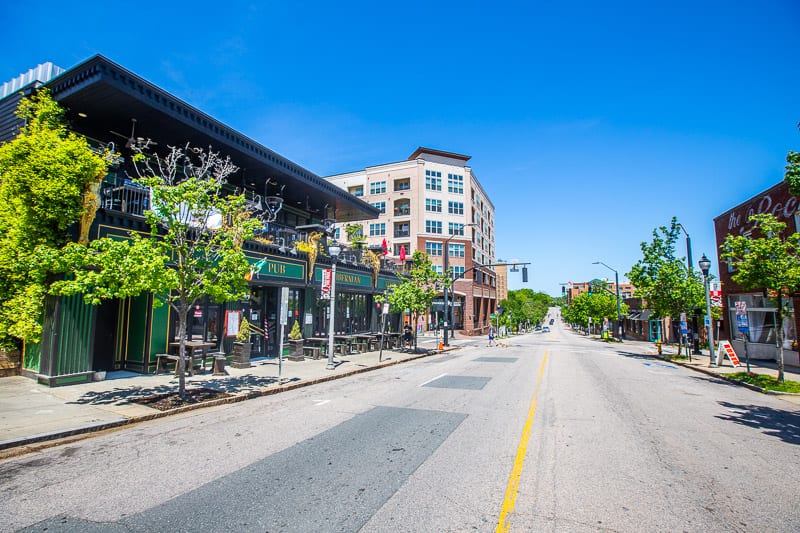
- Good for: students, young professionals, artists
- Average house cost: Median listing price: $546K (Price per Sq/Ft: $476)
- Average rent cost: around $2000 per month for a 2-bedroom home
- Nearby schools: Wiley Elementary, Daniels Middle, Needham Broughton High.
- Map of neighborhood
Sandwiched between the tranquil retreats of Boylan Heights and Five Points is Glenwood South, an area known as the entertainment district of Raleigh.
The main S. Glenwood Ave is lined with progressive bars, breweries, restaurants, nightclubs, boutique stores, art galleries and studios.
Here you’ll find a mixture of college students to young creative professionals and artists eating, drinking, creating, and living.
With 20-story apartment complexes underway, the Glenwood South district is fast becoming one of downtown’s most distinctive neighborhoods.
This area consists of the southern blocks of Glenwood Avenue west of downtown and south of Peace Street.
Just 20 years ago this area was a warehouse district and industrial neighborhood, but renovations of historic buildings have revitalized this area into a restaurant, shopping, nightlife and office district.
Here you’ll find a blend of condominiums and single-family homes, with residents enjoying some of the best that downtown Raleigh has to offer without ever leaving home.
If you move here you’ll be living in a true mixed use neighborhood, just know there’s going to be an element of noise, particularly on the weekend evenings.
Things to do, eat, drink:
- Raleigh Beer Garden – 350+ beers
- Hibernian Pub & Restaurant – Irish pub grub and drinks
- 42nd St. Oyster Bar – Southern Seafood Tradition Since 1931
- Taverna Agora Greek Kitchen & Bar – exceptional Greek & other Mediterranean eats (Read our review of Taverna Agora)
- Carolina Ale House – sports bar and food
- Tin Roof – live music joint
- C. Grace – cocktail lounge
Read our guide to the Glenwood South district in Raleigh.
University Park
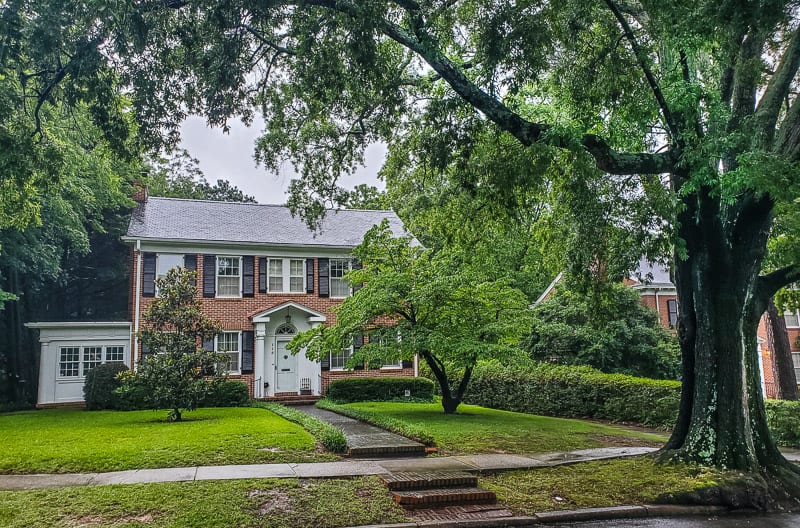
- Good for: students, young professionals, families
- Average house cost: Median listing price: $995K (Price per Sq/Ft: $461)
- Average rent cost: around $2200 per month for a 2-bedroom home
- Nearby schools: Olds Elementary, Daniels Middle, Needham Broughton High.
- Map of neighborhood
University Park is another of the old neighborhood areas in Raleigh NC and is a collaboration of many neighborhoods: Oberlin Village, Fairmont, Bagwell, Beaver Dam, Wilmont, Dixie Forest and Forest Hills.
Located in west central Raleigh, University Park’s name is connected to its location – it’s bordered to the south by Hillsborough Street and NC State University.
Its north border is Wade Avenue, Oberlin Rd and Cameron Village is to the east, and Meredith College Meredith and State Fair Grounds to the west.
This community dates back to 1924 and has continued to develop over the years – some homes have been torn down and new homes have been built but the old neighborhood charm still exists.
Here you will find an urban neighborhood with homes connected by a network of green-ways, wildlife habitats, and public and private gardens.
Things to do, eat, drink:
- Cup A Joe – Funky coffeehouse
- Raleigh Brewing Company – tap room + food trucks
- Lucky Tree – Hip coffeehouse with local art exhibits
- Jubala Coffee – one of the best coffee shops in Raleigh (Read our Jubala Review)
- Brickhouse Sports Pub – New England Patriots & Ohio State Buckeye fans hangout.
- The Players Retreat – Storied NC State sports bar
- Neomonde Mediteranean
Midtown
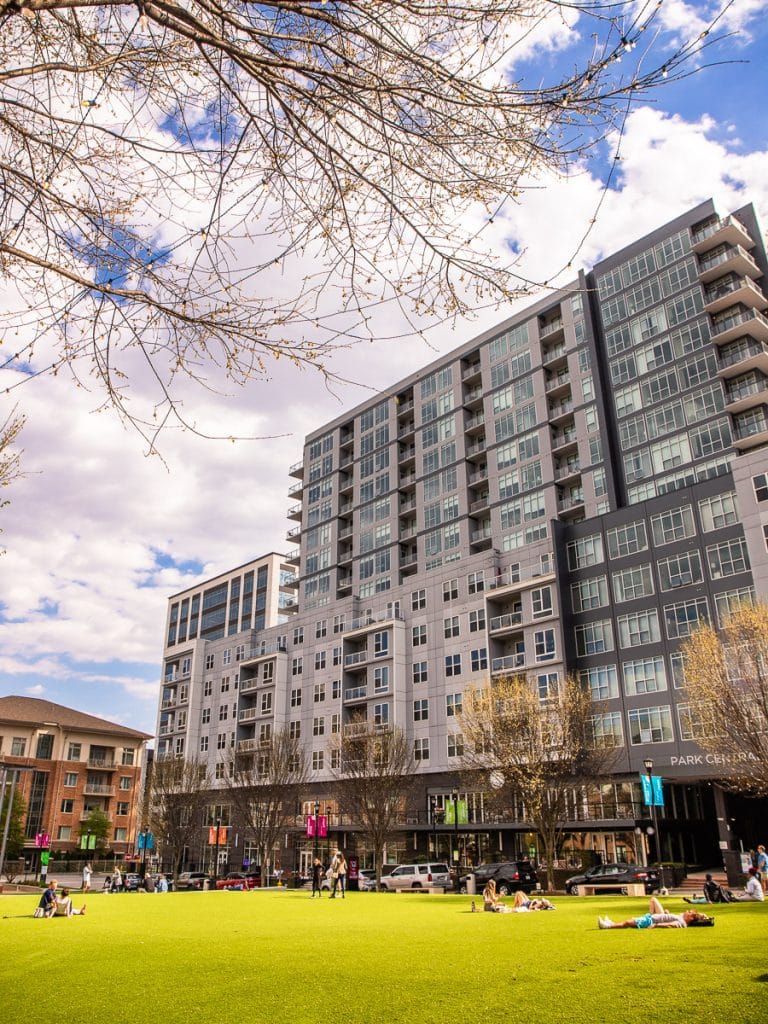
- Good for: students, young professionals, solo people
- Average house cost: Median listing price: $615 million (Price per Sq/Ft: $302)
- Average rent cost: around $1800 per month for a 2-bedroom home
- Nearby schools: Stough Magnet Elementary School, Jeffreys Grove Magnet Elementary School, Raleigh Charter High School
- Map of neighborhood
Midtown Raleigh is an area that encompasses four popular shopping and entertainment districts – Crabtree Valley, Five Points, North Hills, and Village District. It kind of wraps around the I-440 highway, and is both inside the beltline and outside.
It’s located just north of downtown and has everything you need from a bustling neighborhood, especially if it’s your first home you’re looking for in Raleigh.
On one side, you have the miles of scenic trails that reach the Neuse River Greenway Trail and on the other you have 220 stores in the Crabtree Valley Mall.
It’s full of urban eateries, quirky coffee shops, and top-class restaurants. It also comes alive at night with music venues and movie theaters offering night time entertainment.
It’s an ideal place for young professionals or those flying solo since there’s plenty of things happening to keep you entertained.
Things to do, eat, drink:
- Shop at Crabtree Valley Shopping Mall
- Enjoy craft beers at Neuse River Brewing Company
- Play a round of golf at Carolina Country Club
- Watch an evening concert at Midtown Park in the summer
Don’t miss these midtown guides:
FAQs About Neighborhoods in Raleigh
With many lakes, natural parklands, and the 180 miles of greenway system, Raleigh has so much to love and enjoy. So when it comes to deciding which neighborhood you want to settle down in, you should be asking yourself these questions:
What is the safest area in Raleigh NC?
The safest neighborhoods in Raleigh are Oakwood, Village District, Five Points, Modecai, Boylan Heights, and North Hills, in our opinion.
What are the most dangerous areas in Raleigh NC?
East Raleigh is the most dangerous area in Raleigh, and South Central Raleigh also has a high crime rate compared to other areas. The 3100 stretch of New Bern Avenue is notorious for high crime, but overall, the city is quite safe.
Is Raleigh NC expensive to live?
Raleigh can be an expensive place to live because it’s booming in popularity and that puts the prices up. Although, it’s claimed that house prices in Raleigh are 2% lower than the average house price in the USA – every percent helps!
Pin Below To Save To Pinterest
